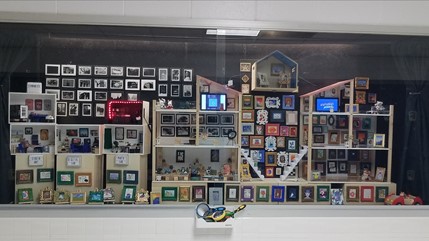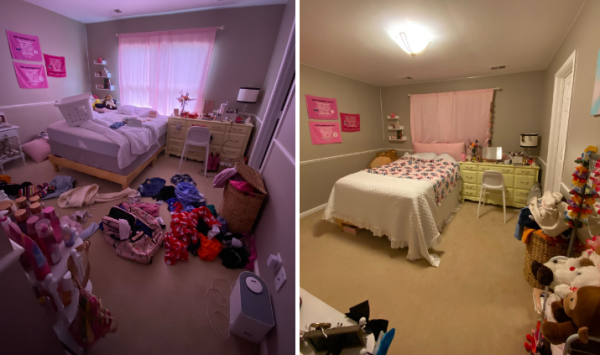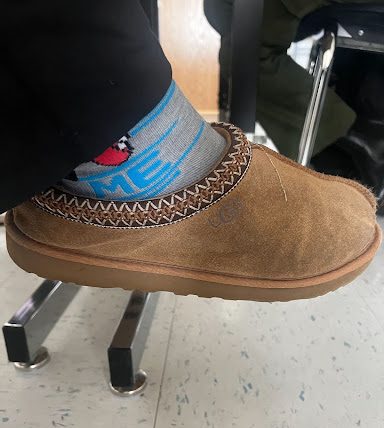Visual arts department strives to expand its classes

Photo courtesy of Leah Abraham
From ceramics to animations to photography, these miniature art pieces serve to give students a glimpse into the type of work students can learn to create in visual arts classes.
As Spartans are in the process of selecting their courses for the 2022-23 school year, visual arts teachers are making efforts to promote their classes in hopes of sparking interest in art.
Students across the visual arts classes submitted works they created in their classes as contributions to the department’s mini art show. The display, which can be seen by the planetarium, showcases a range of art that teachers hope can inspire students to sign up for art classes.
“I think art is important for everyone just to help foster [the] creativity that you have in you,” said digital art and animation teacher Tiffany Duncan.
The visual arts department is one with many art classes, including ceramics, photography, digital art, and studio art. With such a variety, students with interests in multiple areas of art – or those who don’t know what type of class best suits them – may be faced with a tough decision as to which class to choose.
“[For] some classes, you have to have other classes before you can take them,” said Duncan. “So that’s already a factor in your decision-making. But I think people should look at the class, look at the work that’s actually coming out of the class, look at the student work and just kind of decide [from there].”
Learning style is something to consider when it comes to choosing art classes. Students who want more structure may choose to take studio art or ceramics, while more self-paced students might consider digital art. Students can also consider the type of art and art mediums they feel most drawn to.
“If you want to do things with your hands, you might want to take ceramics,” said Duncan. “If you are someone who is really interested in learning how to paint and draw, or if you just want to dip your foot into a little bit of everything, then studio art is where you’re going to get everything. And digital art is more for people who aren’t afraid of the computer.”
Electives can leave just as much of an impact on a student’s academic life and pursuits as core classes. Oftentimes, students choose to take certain courses based on factors other than interest or passion in a particular subject area.
“There are often elective courses that many students want to take each year,” said counselor Kimberley Greene-Herbert, who spoke on the behalf of Student Services. “This can be impacted by such things as emerging career trends or developments in the job market and any new electives that we are offering that year.”
Besides job prospects and new opportunities, peer pressure and presumed lack of difficulty also play a role in students’ choices for classes. Because of this, there is the risk of regretting a chosen class or realizing that a class may be more time-consuming than previously thought.
“Unfortunately, students do enroll in certain classes because of their friends [instead of] enrolling in classes that they have a true interest in,” said Greene-Herbert. “Therefore, [they] may not perform as well in the class. Students also miss out on the opportunity to take an elective that may help them discover a career path or help prepare them for their intended career path.”
Student Services advises that students be mindful when choosing their electives. Interest in the subject, teaching style, and structure of a class are all helpful to the decision-making process.
“Don’t be afraid to ask questions because you’re the one who’s gonna have to be in that class for the whole year,” said Duncan. “So, you want to do your research and make sure that you think you’re going to be comfortable there.”
Students have until March 25 to make changes to their courses for next school year.





